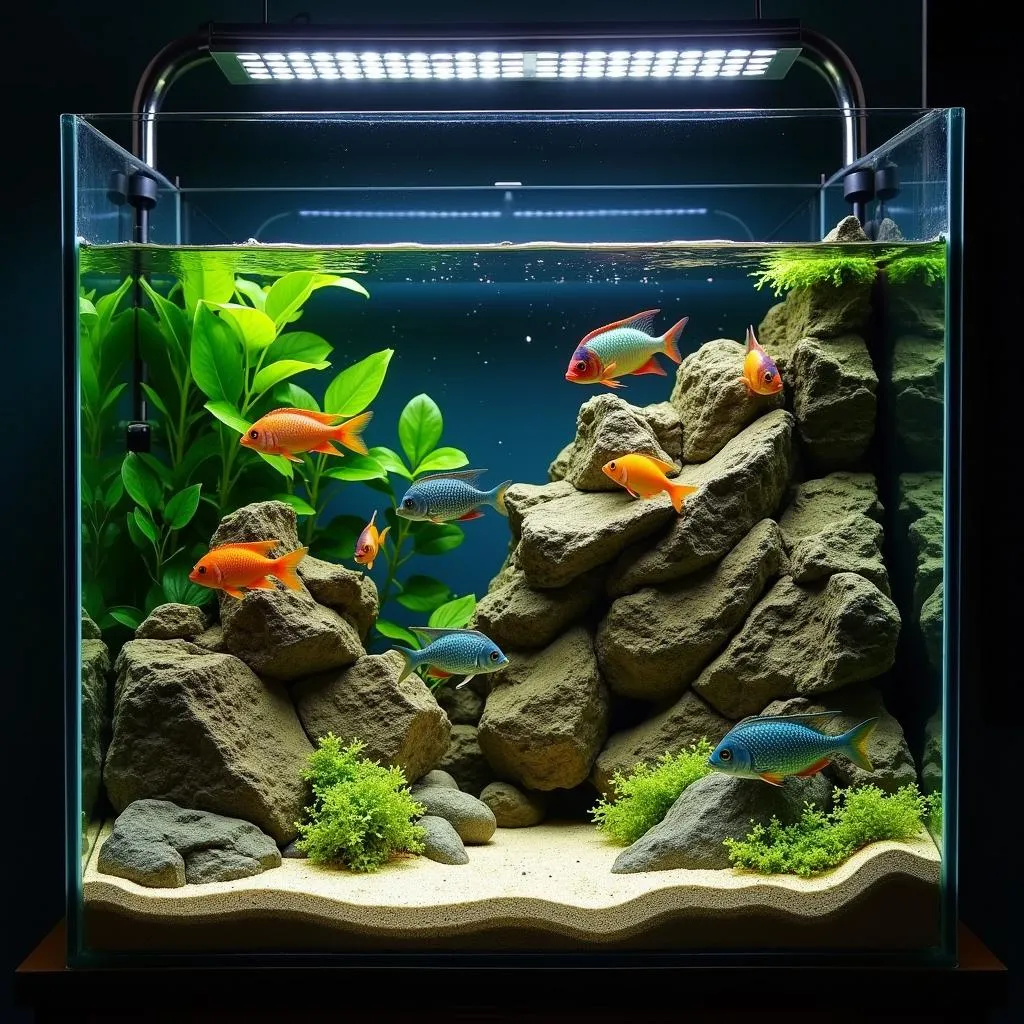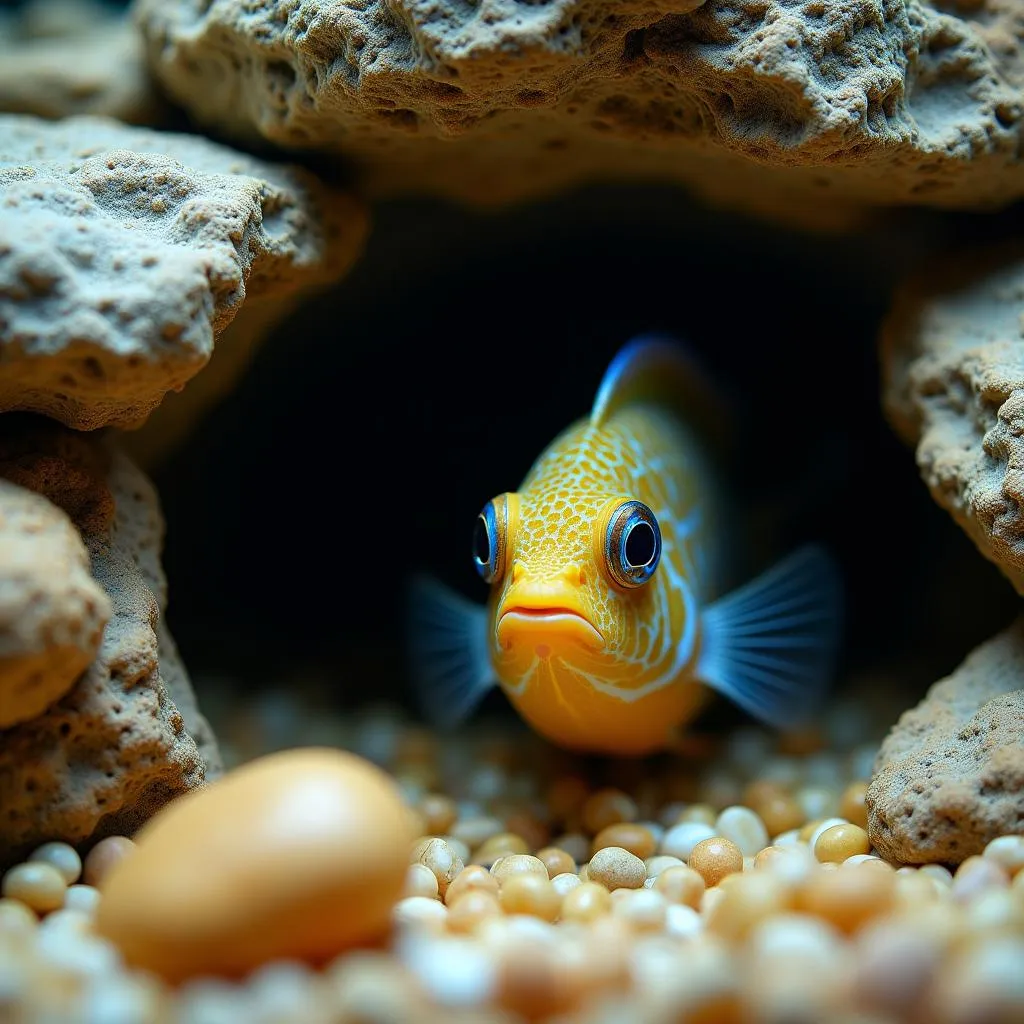African Cichlid Rocks: The Aquarist’s Guide to Building a Stunning Underwater Landscape
African Cichlid Rocks are more than just decorative elements in an aquarium; they are essential for replicating the natural environment of these vibrant fish. From Lake Malawi’s rocky shores to Lake Tanganyika’s dramatic depths, cichlids have evolved to thrive amongst these underwater formations.
Why African Cichlid Rocks Matter
Choosing the right rocks isn’t just about aesthetics, it directly impacts the health and well-being of your cichlids. Here’s why:
- Territory and Shelter: Cichlids are known for their territorial behavior. Rocks provide caves, crevices, and visual barriers, allowing them to establish territories and seek refuge, reducing stress and aggression.
- Breeding Success: Many cichlid species are cave spawners, relying on rocky nooks and crannies to lay their eggs and raise their fry. A well-designed rockscape provides ample breeding sites.
- Water Chemistry: Certain types of rocks, particularly those containing calcium carbonate, can influence water pH and hardness. This is crucial for replicating the naturally alkaline waters of African Rift Lakes.
 African Cichlid Aquarium with Rock Formations
African Cichlid Aquarium with Rock Formations
Selecting the Perfect African Cichlid Rocks
With a myriad of options available, choosing the right rocks can feel overwhelming. Here’s a breakdown of popular choices:
- Texas Holey Rock: This porous limestone is a favorite for its ability to buffer pH and hardness, mimicking the conditions of African lakes. Its numerous holes and crevices provide excellent hiding spots.
- Lava Rock: Lightweight and inert, lava rock is a good choice for creating dramatic aquascapes. It’s important to ensure it’s free of sharp edges that could harm your cichlids.
- Slate: Offering a natural, layered look, slate is ideal for building caves and terraces. It’s relatively inert and won’t significantly alter water chemistry.
- Petrified Wood: While visually appealing, use petrified wood sparingly as it can release tannins into the water, affecting color and pH.
Expert Insight: “When selecting rocks, always prioritize the safety of your fish. Avoid rocks with sharp edges or those that could leach harmful substances into the water,” advises Dr. Amina Kombe, an aquarist specializing in African cichlids at the University of Dar es Salaam.
Building Your African Cichlid Rockscape
Creating a visually stunning and functional rockscape is an art. Here are some tips:
- Planning is Key: Before placing any rocks, sketch out your desired layout, considering the needs of your cichlid species and available space.
- Create a Stable Base: Use a layer of aquarium-safe gravel or sand as a base to prevent rocks from shifting and potentially cracking the aquarium glass.
- Build Upwards: Arrange larger rocks first, creating caves and overhangs. Use smaller rocks to fill gaps and add visual interest.
- Aquascaping Silicone: Securely attach rocks together using aquarium-safe silicone to prevent collapses, especially in high-traffic areas.
- Patience is a Virtue: Take your time, experimenting with different arrangements until you achieve a visually pleasing and functional rockscape.
 African Cichlid Hiding in Rock Crevice
African Cichlid Hiding in Rock Crevice
Maintaining Your Cichlid Rockscape
Maintaining your rockscape is just as important as creating it. Here’s how:
- Regular Water Changes: Perform regular water changes to remove accumulated waste and maintain optimal water parameters.
- Siphon Gravel: Use a gravel vacuum to clean the substrate around your rocks, removing debris and uneaten food.
- Inspect for Algae: Keep an eye out for algae growth on your rocks. Excess algae can indicate water quality issues.
Conclusion
Creating a captivating and healthy environment for your African cichlids involves more than just filling a tank with water. By understanding the importance of African cichlid rocks and putting in the effort to select and arrange them thoughtfully, you provide your fish with a habitat that replicates their natural environment, promoting their well-being and allowing their vibrant personalities to truly shine.


